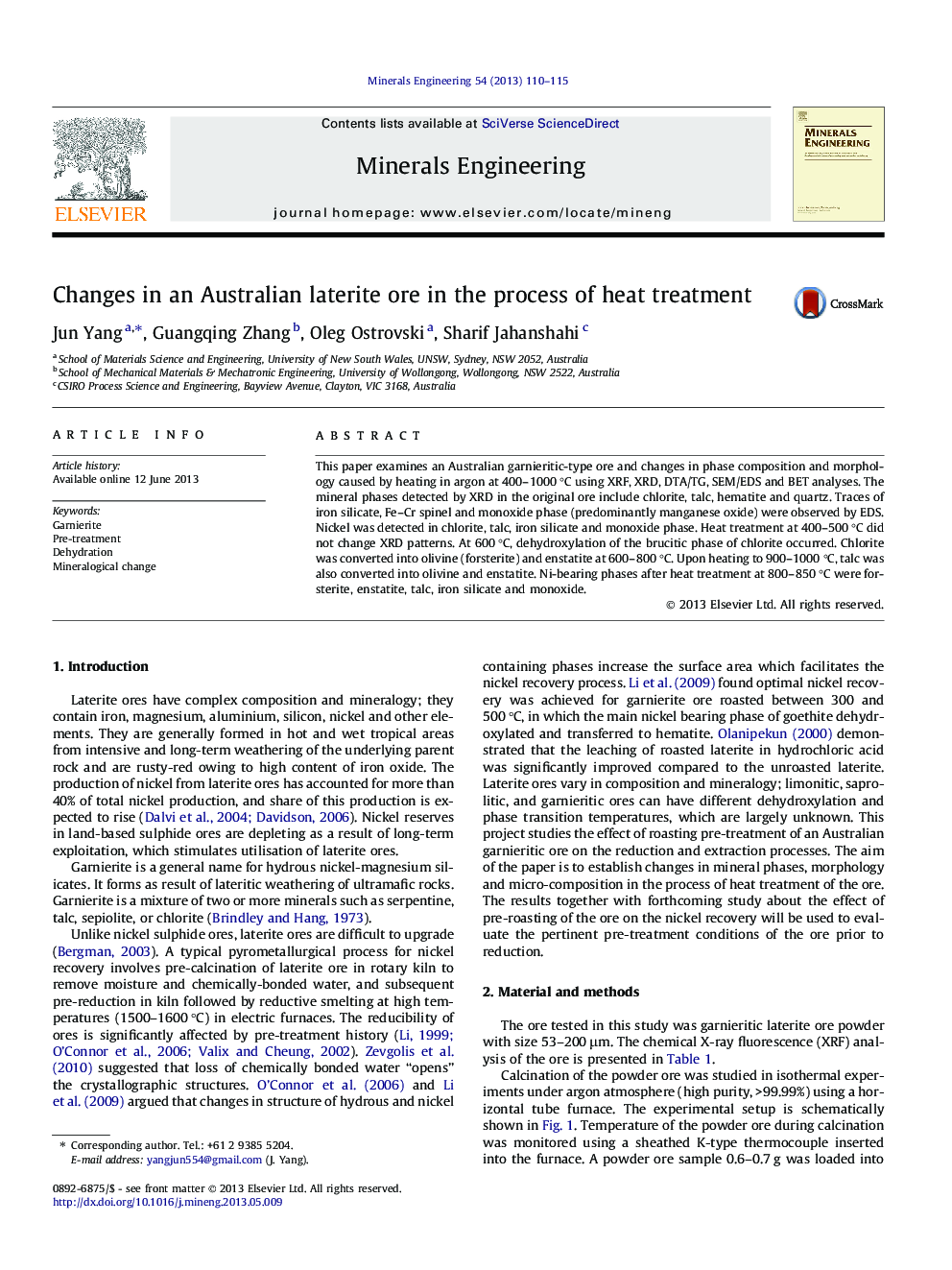| کد مقاله | کد نشریه | سال انتشار | مقاله انگلیسی | نسخه تمام متن |
|---|---|---|---|---|
| 233364 | 465336 | 2013 | 6 صفحه PDF | دانلود رایگان |

• Chlorite and talc are two main nickeliferous minerals in the raw garnierite.
• Chlorite changes to partially dehydrated chlorite from 600 to 800 °C and to olivine after 800 °C.
• Talc remains up to 1000 °C without morphological changes.
• Detrimental crystallisation of forsterite or enstatite occurs at about 810 °C.
• Beneficial physicochemical properties were obtained for treated ore between 600 and 700 °C.
This paper examines an Australian garnieritic-type ore and changes in phase composition and morphology caused by heating in argon at 400–1000 °C using XRF, XRD, DTA/TG, SEM/EDS and BET analyses. The mineral phases detected by XRD in the original ore include chlorite, talc, hematite and quartz. Traces of iron silicate, Fe–Cr spinel and monoxide phase (predominantly manganese oxide) were observed by EDS. Nickel was detected in chlorite, talc, iron silicate and monoxide phase. Heat treatment at 400–500 °C did not change XRD patterns. At 600 °C, dehydroxylation of the brucitic phase of chlorite occurred. Chlorite was converted into olivine (forsterite) and enstatite at 600–800 °C. Upon heating to 900–1000 °C, talc was also converted into olivine and enstatite. Ni-bearing phases after heat treatment at 800–850 °C were forsterite, enstatite, talc, iron silicate and monoxide.
Journal: Minerals Engineering - Volume 54, December 2013, Pages 110–115